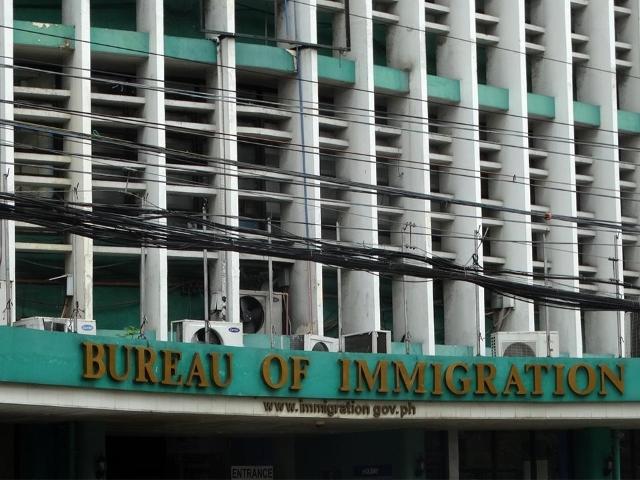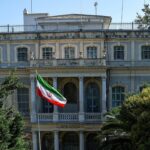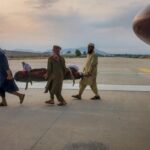The Bureau of Immigration (BI) rescued three Filipino human trafficking victims who were allegedly bound for Spain and is currently processing the deportation of an overstaying South Korean national.
According to the bureau, the victims—two men and one woman in their late 30s and 40s—attempted to board an Emirates flight to Spain at Ninoy Aquino International Airport (NAIA) before being intercepted by immigration officers.
The victims initially claimed they worked for a local tech company and were traveling to Spain for a conference. However, immigration officials found their statements suspicious and referred them for secondary inspection.
They later admitted they were traveling for employment and had been recruited after paying over ₱300,000 to a contact they met on social media.
“The recruiter promised to provide all necessary documents and assist them in leaving the country illegally,” the BI stated.
The Immigration Commissioner stated that an investigation is underway to determine whether any immigration personnel were involved in the incident.
“In line with the BI’s one-strike policy, we will take legal action against anyone involved in human trafficking,” the Commissioner said.
The victims were handed over to the inter-agency council against human trafficking for further investigation and legal proceedings against their recruiters.
Overstaying Foreigner Arrested
Meanwhile, immigration authorities arrested a South Korean man in Tubigon, Bohol, for allegedly overstaying his visa.
The 56-year-old suspect was apprehended at his residence in Barangay Pooc Oriental after reportedly failing to update his immigration status since 2016. His prolonged stay violated the Philippine Immigration Act, according to the BI.
“Our officers remain vigilant in monitoring and acting against foreign nationals who overstay and violate immigration policies,” the Commissioner stated.
“The Bureau has zero tolerance for such violations. The law applies to everyone without exception,” he added.
Following his arrest, the foreign national was transported by ferry to Cebu City and temporarily detained at the Mabolo Police Station before being transferred to the BI’s facility in Manila.
He will undergo deportation proceedings and be blacklisted to prevent future re-entry into the country.
“The Philippines welcomes foreigners who abide by our laws. Those who break them will face legal consequences,” the Commissioner said.
“Overstaying is not a minor offense—it is a serious violation of immigration rules, and we will enforce the law accordingly,” he emphasized.
Bureau of Immigration (BI)
The **Bureau of Immigration (BI)** is the Philippine government agency responsible for regulating the entry, stay, and exit of foreign nationals in the country. Established in 1940 under the Philippine Immigration Act, it enforces immigration laws, processes visas, and oversees border control. The BI plays a key role in national security, tourism, and foreign labor management.
Ninoy Aquino International Airport (NAIA)
Ninoy Aquino International Airport (NAIA), located in Manila, Philippines, is the country’s primary international gateway and was originally named Manila International Airport. It was renamed in 1987 in honor of Benigno “Ninoy” Aquino Jr., a prominent opposition leader whose assassination at the airport in 1983 sparked widespread protests. Today, NAIA serves as a major hub for Philippine aviation, handling millions of passengers annually despite challenges with congestion and aging infrastructure.
Spain
Spain, located in southwestern Europe, is a country rich in history and culture, shaped by diverse civilizations such as the Romans, Moors, and Christians. Known for its vibrant traditions, flamenco music, and iconic landmarks like the Alhambra and Sagrada Família, Spain also played a major role in global exploration during the Age of Discovery. Today, it is celebrated for its cuisine, festivals, and contributions to art, with famous figures like Picasso and Gaudí leaving a lasting legacy.
South Korea
South Korea, officially the Republic of Korea, is a vibrant East Asian nation known for its rapid modernization, rich cultural heritage, and technological advancements. Historically, it was divided from North Korea after World War II and endured the Korean War (1950–1953), emerging as a democratic and economic powerhouse. Today, it is celebrated for its traditions, such as hanbok (traditional clothing) and K-pop culture, alongside landmarks like Gyeongbokgung Palace and Jeju Island.
Tubigon, Bohol
Tubigon is a coastal municipality in Bohol, Philippines, known for its scenic landscapes and vibrant marine life. Historically, it was a significant port town during the Spanish colonial era, serving as a gateway for trade and transportation between Bohol and nearby islands like Cebu. Today, Tubigon is celebrated for its bustling port, rich fishing industry, and cultural festivals that highlight its heritage.
Barangay Pooc Oriental
Barangay Pooc Oriental is a coastal village located in Talisay City, Cebu, Philippines, known for its scenic views and proximity to popular tourist spots like the Temple of Leah. Historically, it has been a fishing and farming community, with its economy gradually shifting toward tourism due to its coastal charm and accessibility. The barangay also holds cultural significance as part of Cebu’s heritage, with local traditions and festivals reflecting its vibrant community life.
Cebu City
Cebu City, located in the central Philippines, is the country’s oldest city and was the first Spanish settlement, established in 1565. Known as the “Queen City of the South,” it is rich in history, with landmarks like Magellan’s Cross and the Basilica del Santo Niño, which commemorate the introduction of Christianity to the Philippines. Today, it is a bustling urban center blending colonial heritage with modern development.
Mabolo Police Station
The Mabolo Police Station is a local law enforcement facility located in the Mabolo district of Cebu City, Philippines. Established to serve the community’s safety needs, it plays a key role in maintaining peace and order in the area. While specific historical details about its founding are limited, it remains an essential part of the city’s public security infrastructure.






